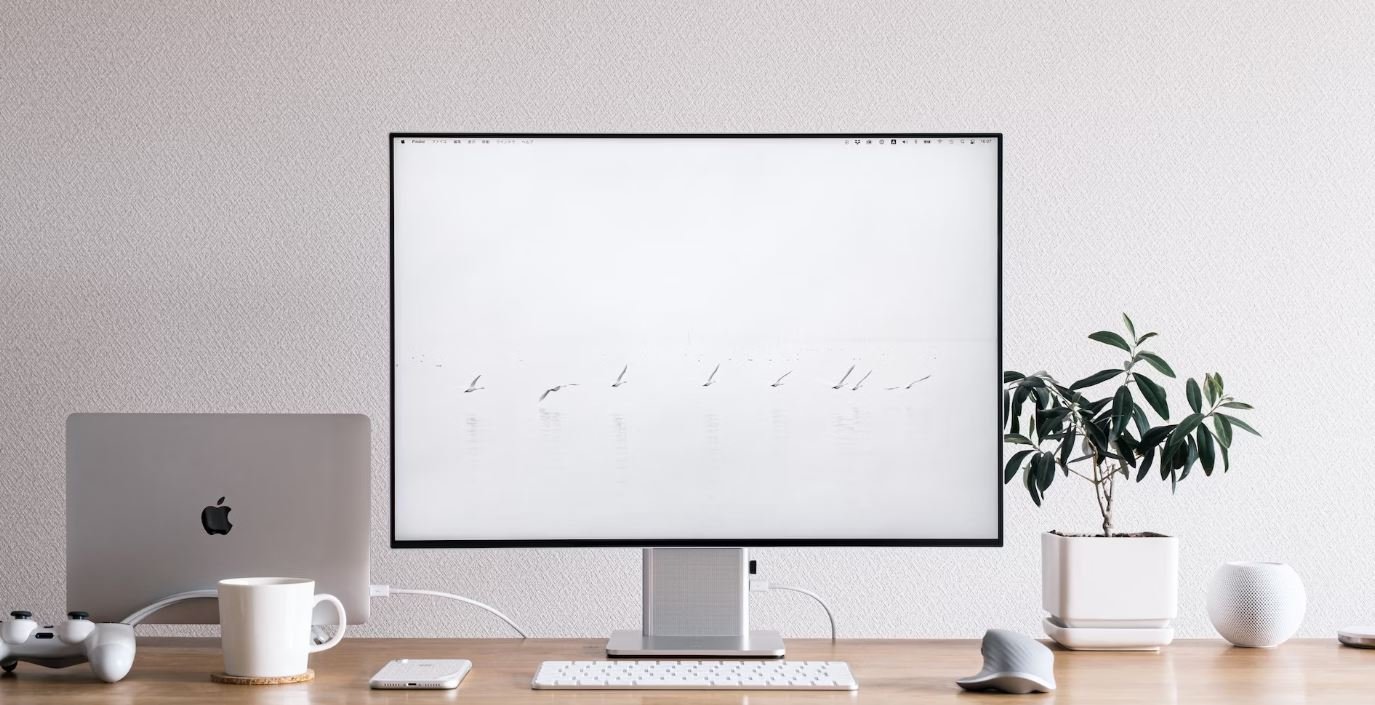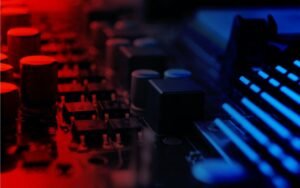AI Art Landscape
Artificial Intelligence (AI) has revolutionized various industries, and the art world is no exception. AI-powered systems are now capable of creating stunning pieces of art, blurring the boundaries between human creativity and machine algorithms. The emergence of AI art has opened up new possibilities and challenges for artists, collectors, and art enthusiasts alike.
Key Takeaways:
- AI art utilizes machine learning algorithms to create unique and innovative artworks.
- It challenges traditional notions of artistic creation and raises questions about authorship and creativity.
- AI art is gaining popularity in the art market, with new digital platforms and exhibitions dedicated to showcasing AI-generated art.
- The ethical implications of AI art, such as copyright and the role of human artists, are subjects of current debate.
- AI art has the potential to inspire new forms of artistic expression and push the boundaries of human imagination.
One of the most intriguing aspects of AI art is how it combines machine learning algorithms with human input. These algorithms analyze vast amounts of data and use pattern recognition to generate artworks. Artists can either train the AI system to learn from existing art styles or let it create something entirely new. This collaboration between human artists and machines leads to the production of art that is both familiar and innovative, challenging our perception of what art can and should be.
*AI-generated art has already achieved significant recognition in the art world. For example, in 2018, an AI-generated artwork titled “Portrait of Edmond de Belamy” sold for over $430,000 at an auction, signaling a growing market demand for AI art.
AI Art Landscape
AI art is a rapidly evolving field that encompasses various styles and techniques. Some common approaches to AI art include:
- Style Transfer: AI algorithms can transfer the style of one artwork onto another, creating a fusion of different artistic influences.
- Generative Adversarial Networks (GANs): GANs consist of two neural networks that work together to generate new images. One network generates images, and the other network evaluates them for authenticity.
- Deep Dream: Deep Dream algorithms create surreal and dream-like images by enhancing patterns and features within existing images.
- Neural Style: Neural style algorithms analyze the content and style of an image, and then recreate the image in the style of another artwork.
*With AI art being a new and dynamic field, the possibilities are endless, and new approaches and techniques will continue to emerge.
The Impact of AI Art
AI art has had a profound impact on different aspects of the art world:
- Artistic Exploration: AI art allows artists to explore new forms of expression and experiment with different styles and techniques.
- Art Market: The growing popularity of AI art has led to the emergence of dedicated platforms and exhibitions that showcase and sell AI-generated artwork.
- Ethical Debates: The rise of AI art has sparked discussions regarding copyright, originality, and the role of human artists in the creative process.
- Creative Collaboration: AI art blurs the boundaries between human and machine, enabling artists to collaborate with intelligent systems to produce innovative artworks.
**
AI-generated art challenges the notion of traditional art creation, as the role of the artist shifts from manual creation to algorithmic design.
**
| Year | AI Art Milestone |
|---|---|
| 2015 | Google’s Deep Dream generates surreal images and sparks interest in AI art. |
| 2018 | AI-generated artwork sells for over $430,000 at an auction. |
| 2020 | AI art gains widespread recognition and is featured in major art exhibitions worldwide. |
Artificial Intelligence is redefining the boundaries of artistic creation. As technology continues to advance, AI art will likely become an integral part of the art world, influencing artistic trends, challenging traditional notions, and inspiring new forms of expression.
The Future of AI Art
The future of AI art holds immense potential:
- Increased Adoption: As AI algorithms become more sophisticated and accessible, more artists and creators will embrace AI art as a medium for expression.
- Advancements in Technique: The development of new AI art techniques will enhance the complexity and diversity of AI-generated artworks.
| Advantages | Disadvantages |
|---|---|
| Unlimited creative possibilities | Ethical concerns regarding originality and authorship |
| Ability to produce art at scale | Dependency on human input and subjective decision-making |
| Breaking traditional artistic boundaries | Potential for misuse and manipulation |
*AI art is an exciting and rapidly evolving field that pushes the boundaries of human creativity. With continued technological advancements, the intersection of AI and art will continue to inspire and challenge artists and audiences alike.

Common Misconceptions
Artificial Intelligence in Art
There are various misconceptions about the role of artificial intelligence (AI) in art, which can lead to misunderstandings. One common misconception is that AI completely replaces the role of human artists in creating art. However, this is not the case as AI is mainly used as a tool to assist and augment human creativity.
- AI supports and enhances human creativity in art-making process
- AI cannot replace the unique perspective and emotions that human artists bring to their work
- AI and human collaboration can lead to innovative and unexpected artistic outcomes
AI Creating Landscapes
Another misconception is that AI has the ability to independently create realistic landscapes without any human input. While AI can generate landscapes based on existing data and patterns, it lacks the innate understanding and creative interpretation that human artists possess. AI-generated landscapes are often limited to replicating existing scenes rather than uniquely interpreting them.
- AI-generated landscapes rely on pre-existing data and patterns
- AI lacks the ability to provide unique interpretations and emotional depth in landscape creation
- Human artists possess the ability to infuse personal experiences and emotions into their landscapes
AI Art and Originality
Contrary to popular belief, AI-generated art can indeed be original and unique. Many assume that since AI relies on algorithms and data, the produced artworks lack originality. However, AI algorithms can surprise both the audience and the artists themselves by generating pieces that go beyond existing conventions and express novel ideas.
- AI can create art that challenges current artistic norms and assumptions
- AI often uses algorithms to generate unique combinations and compositions
- AI-generated art can spark new ideas and inspirations for human artists
AI and the Creativity Debate
A common misconception is that AI art diminishes the role of human creativity. Some believe that since AI can generate art, it negates the need for human artistic skill and innovation. However, AI art serves as a complement to human creativity and expands the possibilities rather than replacing it entirely.
- AI and human creativity can coexist and mutually benefit each other
- AI can help expand artistic possibilities and inspire new creative approaches
- The fusion of AI and human creativity can lead to collaborative and innovative art forms
Ethics and Bias in AI Art
Another misconception around AI art revolves around the ethics and biases involved. Critics argue that AI algorithms may perpetuate biases present in the data used for training, leading to unequal representation or reinforcement of stereotypes. However, it is important to acknowledge these concerns and ensure careful monitoring and critical engagement with AI artworks.
- AI algorithms can inadvertently reflect societal biases present in the data
- Critical examination and evaluation are necessary to prevent the reinforcement of harmful stereotypes
- Ethical considerations must be taken into account in the development and use of AI art

Introduction
Artificial intelligence (AI) has revolutionized various industries, including the art landscape. AI art brings a unique blend of creativity and technology to create remarkable works. In this article, we explore ten fascinating aspects of AI art, showcasing the impact it has had on the art world.
Table: Pioneering AI Artists
Below is a list of significant AI artists who have made a mark in the art landscape:
| Artist | AI Techniques Used | Notable Works |
|---|---|---|
| Mario Klingemann | Neural networks, machine learning | The Butcher’s Son (2018) |
| Anna Ridler | Generative adversarial networks (GANs) | The Stranger in the Glass (2017) |
| Robbie Barrat | Deep convolutional neural networks | Edmond de Belamy (2018) |
Table: AI Art Sales
The commercial success of AI art has grown significantly, as showcased by the following sales figures:
| Artwork | Sale Price | Auction House |
|---|---|---|
| Portrait of Edmond de Belamy | $432,500 | Christie’s |
| Memories of Passersby I | $3.1 million | Sotheby’s |
| The First AI-Generated Artwork to be Sold | $432,500 | Heritage Auctions |
Table: AI in Art Curation
AI is being integrated into art curation, enabling new avenues for exploration and enhanced visitor experiences:
| Museum | AI Integration | Benefits |
|---|---|---|
| The Metropolitan Museum of Art | AI-guided art tours | Personalized recommendations |
| The Louvre | AI-based visitor tracking | Improved crowd management |
| Museum of Modern Art (MoMA) | AI-generated virtual exhibits | Accessible art experiences |
Table: AI Paintings vs. Human Paintings
AI paintings are often indistinguishable from those created by humans. Below are examples of AI and human paintings:
| Painting | Creator | Original or AI? |
|---|---|---|
| Nature’s Serenity | Unknown Artist | Human |
| Emergence of the Cosmos | DeepArt | AI |
| Harmony in Blue and Gold | James Abbott McNeill Whistler | Human |
Table: AI Art Patents
AI art has seen a surge in patent applications. The following companies hold notable AI art patents:
| Company | AI Art Patent | Application Year |
|---|---|---|
| IBM | AI-generated artwork using GANs | 2018 |
| Microsoft | Automated art creation using neural networks | 2019 |
| AI-assisted artistic style transfer | 2020 |
Table: AI Art Exhibitions
AI art has gained recognition through dedicated exhibitions worldwide:
| Exhibition | Location | Date |
|---|---|---|
| The AI Revolution | Tate Modern, London | May 2020 – August 2020 |
| Artificial Intelligence & Art | Museum of Contemporary Art, Tokyo | January 2021 – March 2021 |
| Future Imagination: Art and Emerging Technologies | Museum of Contemporary Art Australia | September 2021 – December 2021 |
Table: AI Art Collaboration
AI has bridged the gap between human and machine creativity, leading to inspiring collaborations:
| Collaborators | Project | Result |
|---|---|---|
| Rutger Hauer and Rembrandt AI | Rembrandt’s lost work reconstruction | A stunning digital replica |
| Refik Anadol and Google Arts & Culture | Visualizing the hidden connections within art collections | Unveiling new insights and patterns |
| Manuela Veloso and AICAN | Creating art through human-robot collaboration | A captivating blend of human emotions and computational efficiency |
Table: AI Art Generative Algorithms
Generative algorithms play a crucial role in creating AI art. Here are a few notable ones:
| Algorithm | Features | Applications |
|---|---|---|
| DeepArt | Image style transfer | Reimagining existing artworks |
| NeuroStyle | Neural style transfer | Generating unique artistic representations |
| GANPaint Studio | Image editing and enhancement | Augmenting traditional paintings |
Table: AI Art Critics
AI art critics have emerged to analyze and interpret AI-generated artwork:
| AI Critic | Contributions | Notable Reviews |
|---|---|---|
| Carlo Ratti | Interpreting the intentions behind AI-created art | Rated “The Butcher’s Son” as a groundbreaking example of AI creativity |
| Emily Dickerman | Comparing the originality of human and AI artworks | Stated that a machine cannot replicate human emotions in art |
| AI-Artist | Proposing new aesthetic standards based on AI-generated art | Applauded the depth and complexity of AI art’s visual narratives |
Conclusion
AI art has transformed the art landscape, making significant strides in creativity, commercial success, and integration into museum curation. With groundbreaking artists, remarkable sales, and collaborations pushing boundaries, AI art continues to challenge conventional notions of artistic creation. The future promises even greater engagement between humans and AI, fostering an ever-evolving, highly intriguing artistic world.
Frequently Asked Questions
What is AI art?
AI art refers to the creation of visual works, such as paintings or drawings, generated with the assistance of artificial intelligence.
How does AI generate art?
AI algorithms use machine learning techniques to analyze and interpret large datasets of existing artworks. They then use this knowledge to create new artistic pieces by mimicking the styles and techniques found in those datasets.
Can AI artists create original art?
While AI artists can generate new artwork, the question of originality in art is subjective and often depends on the definition of creativity. AI-generated art can certainly present unique compositions and styles, but the role of the AI algorithm in the creative process raises questions about the true source of creativity.
What are the benefits of AI art in landscape painting?
AI art in landscape painting allows for experimentation and exploration of new styles. It can also augment the creative process of human artists, serving as a source of inspiration or a tool for generating initial concept sketches.
Can AI art replace human artists?
AI art is not meant to replace human artists, but rather to complement and assist them in their artistic endeavors. AI algorithms lack the emotional and contextual understanding that human artists possess, and their works may not resonate with viewers in the same way.
Are AI-generated landscapes considered as valuable as traditional landscapes?
The value attributed to AI-generated landscapes varies from person to person and the subjective nature of art appreciation. Some people might appreciate the technological novelty and innovative concepts behind AI-generated art, while others prefer the traditional craftsmanship and human touch found in traditional landscapes.
Can AI art be copyrighted?
The copyright of AI-generated art is a complex issue that has yet to be fully resolved. Currently, the copyright generally belongs to the human creator who initially trained the AI algorithm and provided the dataset. However, as AI advances, legal frameworks may need to be adapted to consider the role of the algorithm in the creative process.
Can AI artists create art in different styles?
AI algorithms can be trained on specific style datasets, allowing them to generate art in those particular styles. For example, an AI algorithm trained on impressionist landscapes can create artworks in the impressionist style, while another algorithm trained on abstract expressionist paintings can generate art in that style.
How can AI art contribute to the art world?
AI art can contribute to the art world by pushing the boundaries of artistic expression and challenging traditional ideas of creativity. It opens up new possibilities for exploration, collaboration, and experimentation, fostering innovation and diversification within the art community.
Where can I view and purchase AI art landscapes?
AI art landscapes can be found in various online platforms, art galleries, exhibitions, and even museums that showcase contemporary and innovative art forms. Online art marketplaces and specialized AI art websites are also great places to explore and purchase AI art landscape pieces.




